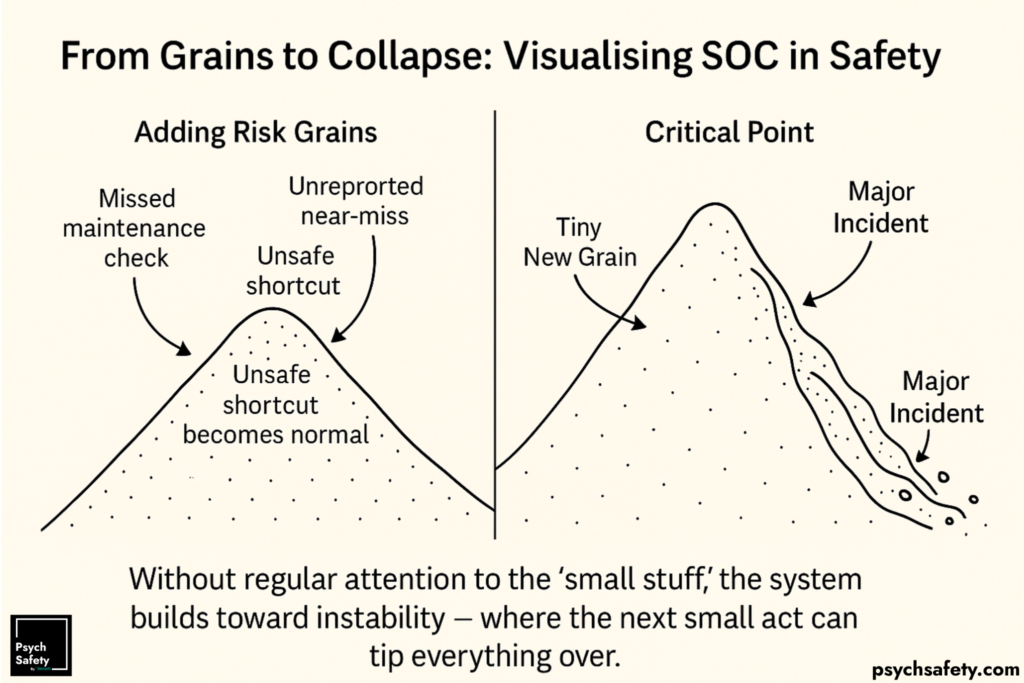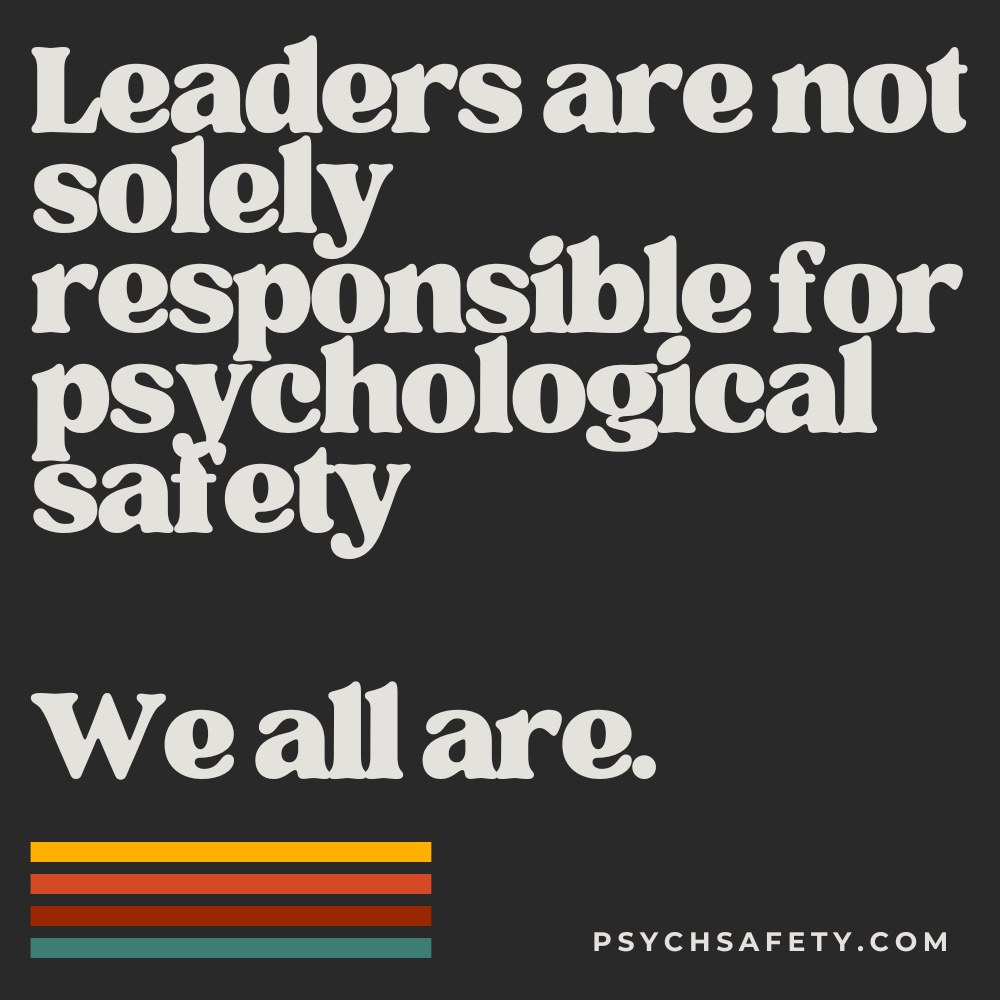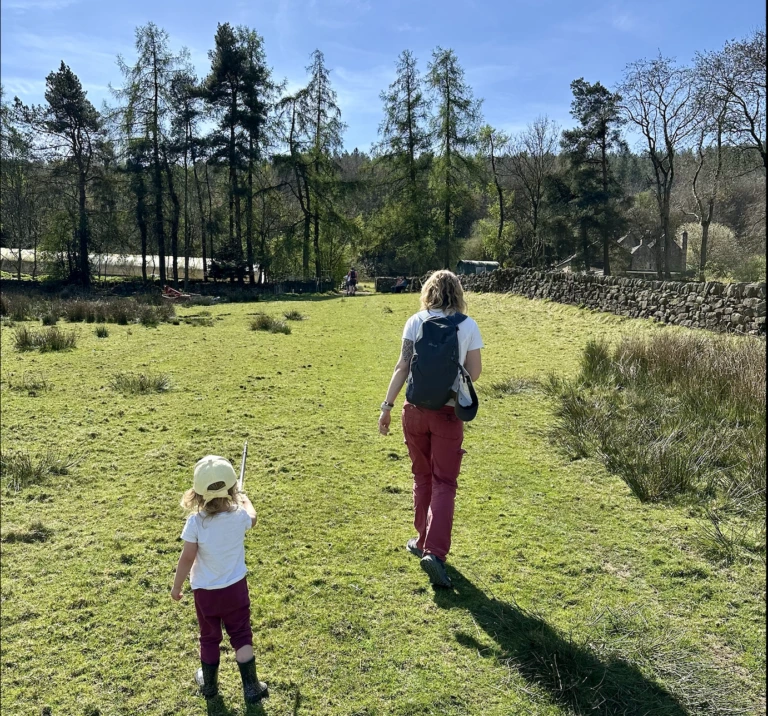Ikigai
Strategy has a reputation for being serious, complex, and difficult, at least if you believe what you see on LinkedIn or read online. But it doesn’t have to be. At the simplest level, strategy is making decisions. It’s about considering our long-term or overall aim, then planning our work and actions towards that. And that applies not just just to the serious business of running an organisation, but also to our own lives and careers, which are deeply interconnected.
A couple of weeks ago, we dedicated a newsletter to the idea that work doesn’t have to suck, something we feel strongly about. This time, I wanted to share and reflect on the concept of Ikigai, which can help us to think and act more intentionally and strategically when it comes to shaping our work and our lives.
Before setting up Psych Safety as a business, I often turned to the concept of Ikigai to guide my decisions – I even had it printed off on my wall as a constant reminder and tool. Ikigai helped me reflect on what I wanted to do, how I wanted to do it, whether I should do it, and whether it contributed to making a living.
What is Ikigai?
Ikigai (生き甲斐), compounds two Japanese words: iki (生き, meaning ‘life’) and kai (甲斐, meaning ‘effect’ or ‘result’), and roughly translates to “something that gives a person a purpose and reason for being”. Its true meaning is fundamentally about finding purpose and joy in life, which can manifest through careers, hobbies, relationships, or contributions to the community, or something else.
As an example of the concept’s value, Dan Buettner, a National Geographic reporter, has suggested that Ikigai may be one of the reasons for the remarkable longevity of the people of Okinawa. Many Okinawans continue engaging in activities and jobs they love well into old age.

If you’ve come across Ikigai before, you may be familiar with this Venn-like diagram of overlapping categories—“what you love,” “what the world needs,” “what you can be paid for,” and “what you are good at”, the idea being that the intersection of all of these is where we find Ikigai.
The first version of this diagram was created by British community activist Marc Winn in 2014 inspired by Dan Buettner’s TED Talk, and whether or not this westernised version fully captures the traditional Japanese meaning of Ikigai, it’s very useful! It offers a valuable tool for sorting out our thoughts and aligning our decisions with purpose and impact. In this sense, I find it as useful, if not more so, than other more ‘serious’ strategic practices such as The Three Horizons – primarily because it includes “what you love”. This is especially powerful because not only does it encourage us to tune into what we actually enjoy and want, but also that we tend to be reasonably good at the things we love, or at least we’re able to tolerate practising enough to get better at it, because we enjoy it.
It’s not always easy to think of things that help us to find or get closer to our version of Ikigai. We can probably all find things that we could get paid for, but we would hate doing, or not be much good at. We can likely also think of any number of things that the world needs, but wouldn’t pay us enough to pay our bills and feed our families. And it’s also possible there are things we are good at that we don’t particularly enjoy, or that there’s not much need for in the world.
Ikigai in practice
I’ve found that keeping an Ikigai-inspired framework visible, such as simply having the diagram on the wall, can be a powerful decision-making tool whenever an opportunity or choice, large or small, comes up. It prompts me to ask myself:
- Am I good at this (or willing to improve)?
- Does this benefit others and have a positive impact on the world?
- Will this help me make a living (or am I consciously choosing to do it for free)?
- Does it feel good? Do I love it?
I don’t have to answer yes to all the questions in order to decide to do something, but the more ‘yes’ answers I have, the more aligned the opportunity feels with my purpose.
Finding or rediscovering our own Ikigai may involve experimenting, sharing ideas, and being open about our deeper interests and passions, all of which are much easier to do in an environment of psychological safety. When we feel safe to speak up, we can more candidly evaluate our personal strengths, and make decisions that align with our sense of purpose.
And this has filtered through into the way we now work at Psych Safety, which is shaped by our broader mission for the organisation as well as our personal values and goals. We’re pretty good at what we do (psychological safety training courses, online workshops, tools and resources, etc), the world certainly needs psychological safety maybe now more than ever, we can be paid for it (though we provide resources and support for free when we can), and we definitely love it!
It was reflecting with Ikigai that helped us decide to build the psychological safety community, Lean Coffee events, and more.
A note on the Ikigai diagram
More recently, David McCandless of Information is Beautiful has modified the original Ikigai Venn diagram to reflect more of the possible intersections between the different elements of love, paid for, good at & world needs. It’s interesting to note that where “good at”, “love” and “need” intersect but without earning, the label is “struggling”. It makes me wonder how liberating a concept such as Universal Basic Income could be, potentially transforming “struggling” to “thriving”.

Whichever version you choose, or if you create your own version, I hope it serves as a useful guide to discovering – or perhaps rediscovering – your Ikigai!
Related Reading:
Work doesn’t have to suck
Psychological Safety: Yogic Philosophy
Psychological Safety is not the goal
Why Should We Create Psychologically Safe Workplaces?
Top 10 Ways to Foster Psychological Safety in the Workplace
Psychological safety online course: March 2025
Our online psychological safety workshops cover everything from what psychological safety is to how to measure and build it in organisations. We offer a range of options to suit your needs, from foundational to advanced learning, for everyone from team members, senior leaders, consultants and trainers. All are highly engaging, inclusive and interactive learning experiences. Attending all six workshops constitutes our “Train The Trainer” qualification.

The workshops will help you to:
- Understand the theory and evidence for psychological safety in relation to team performance.
- Learn key practices for improving and maintaining psychological safety.
- Find out how to measure psychological safety across your organisation or within teams.
- Learn how to foster psychological safety in your teams, organisations, or your own clients.
- Ignite your leadership and management teams with the benefits of psychological safety.
- Use and apply the Psychological Safety Action Pack with teams to measure, build and maintain psychological safety
- Deliver your own workshops and training sessions with tools and techniques gleaned from our experience running training sessions over the past few years.
All our training options and workshops provide certificated CPD hours and Credly badges to evidence your professional development.
Psychological Safety in Practice
Gender and speaking up
As we’ve written about very often, the cost (perceived or real) of speaking up is higher for some than others. And this study shows that to be true for gender. Women, more than men, believed they would be penalised for speaking up, and thus spoke up less than men did — but only when their group was considered uncivil. In civil groups, women reported speaking up to share their ideas just as much as men.
Thanks to Kiron Bondale for the share.
“Making individuals responsible for safety is a myth”
Here’s a compelling article by Rosa Antonia Carrillo, titled “The Myth of Individual Responsibility in Safety” and addresses the need to creating systems and structures where different opinions are actively sought, considered and acted upon, rather than simply asking individuals to “speak up.”
20 Years of Resilience Engineering
The report from the Resilience Engineering Association’s 20-year anniversary meeting how now been published, and covers the field’s progress, challenges, and opportunities, focusing on its evolution as a discipline to address complexity and uncertainty in sociotechnical systems.
What actually stood out to me, amongst the many excellent reflections, was the meeting’s guiding principles:
− Invite diverse perspectives (create space for each person to have a voice)
− Design a flexible system (create space / slack to be flexible)
− Create autonomy (people select where they contribute)
− Defer to expertise (make space for experts to share)
I love how these principles are absolutely aligned with fostering psychological safety in a collaborative space.
This week’s poem:
A Man’s a Man for a’ That, by Robert Burns
Is there for honest Poverty
That hings his head, an’ a’ that;
The coward-slave, we pass him by,
We dare be poor for a’ that!
For a’ that, an’ a’ that.
Our toils obscure an’ a’ that,
The rank is but the guinea’s stamp,
The Man’s the gowd for a’ that.
What though on hamely fare we dine,
Wear hoddin grey, an’ a that;
Gie fools their silks, and knaves their wine;
A Man’s a Man for a’ that:
For a’ that, and a’ that,
Their tinsel show, an’ a’ that;
The honest man, tho’ e’er sae poor,
Is king o’ men for a’ that.
Ye see yon birkie ca’d a lord,
Wha struts, an’ stares, an’ a’ that,
Tho’ hundreds worship at his word,
He’s but a coof for a’ that.
For a’ that, an’ a’ that,
His ribband, star, an’ a’ that,
The man o’ independent mind,
He looks an’ laughs at a’ that.
A Prince can mak a belted knight,
A marquis, duke, an’ a’ that!
But an honest man’s aboon his might –
Guid faith, he mauna fa’ that!
For a’ that, an’ a’ that,
Their dignities, an’ a’ that,
The pith o’ Sense an’ pride o’ Worth
Are higher rank than a’ that.
Then let us pray that come it may,
As come it will for a’ that,
That Sense and Worth, o’er a’ the earth
Shall bear the gree an’ a’ that.
For a’ that, an’ a’ that,
It’s comin yet for a’ that,
That Man to Man the warld o’er
Shall brithers be for a’ that.
From The Canongate Burns: the complete poems and songs of Robert Burns (Canongate, 2001) and available at the Scottish Poetry Library
The post Ikigai appeared first on Psych Safety.





